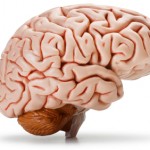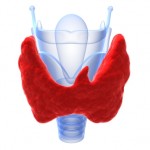Until today I thought Pandas were black and white bears found in zoos or in small numbers in parts of China. Then I read a Wall Street Journal article titled "Does Strep Throat Trigger Serious Ills?" The concept being discussed was that of PANDAS or Pediatric Autoimmune Neuropsychiatric Disorders Associated with Streptococcus. I subsequently found a National Institutue of Mental Health (NIMH), article online about this unfamiliar, relatively new and bizarre condition in which children get neurological problems caused or flared by a streptococcal infection.
Let's begin this two-post discussion with an overview of strep throat, a bacterial infection most commonly seen in children between the ages of 5 and 15. Younger kids can certainly get this disease as can adults, but the typical kid in school has strep throat several times a year. It's important to realize that most (75-80%) sore throats in children aren't bacterial in origin, but if they are caused by streptococcal infection they can lead to severe consequences.
Among those are rheumatic fever with its attendant heart valve consequences and, less frequently, a significant kidney sequela, post-streptococcal glomerulonephritis (inflammation of the tiny filtering blood vessels in the kidneys). Both of these are seen worldwide with considerable frequency, but are much less common in the United States than in years past.
Why is that? Well, most of us who have healthcare (and I know that's far from all of us), would take our children to the pediatrician/family practice physician promptly if they had sudden onset of fever with a severe sore and red throat, swollen lymph nodes in the neck and trouble swallowing (or even some of those). The doc would do a rapid strep test using a swab similar to that done for a throat culture and if that were positive prescribe antibiotics. If it was negative (it can be in about 5% of cases of strep throat, AKA strep pharyngitis), but the presentation and/or exam was suspicious, the physician would do a throat culture.
Those complications I mentioned are relatively rare. When they do occur they're due to an autoimmune reaction; that means the antibodies we produce to help fight the streptococcus can also, in some instances, attack our own tissues.. The theory behind that is called "molecular mimicry," a fancy way to say our heart valve, kidney, joint or brain tissue may have proteins that somehow resemble those of the bacterial cell wall.
There a PubMed Health review on treating strep throat, at least that caused by the bad kind of streptococcal bacteria. Their scientific name is group A beta-hemolytic strep sometimes termed GABHS. PubMed, by the way, comes from the National Institutes of Health's (NIH) National Library of Medicine and prints very solid material that I think you can rely on.
They looked at a series of articles on how best to treat strep throat, 17 trials with over 5,300 subjects, and concluded that good old-fashioned penicillin should be the first choice. It's cheap and no antibiotic resistance in GABHS has ever been documented. So unless you or your child have had an allergic reaction to penicillin, that's the drug your doc will likely use.
We'll get back to PANDAS next post.








